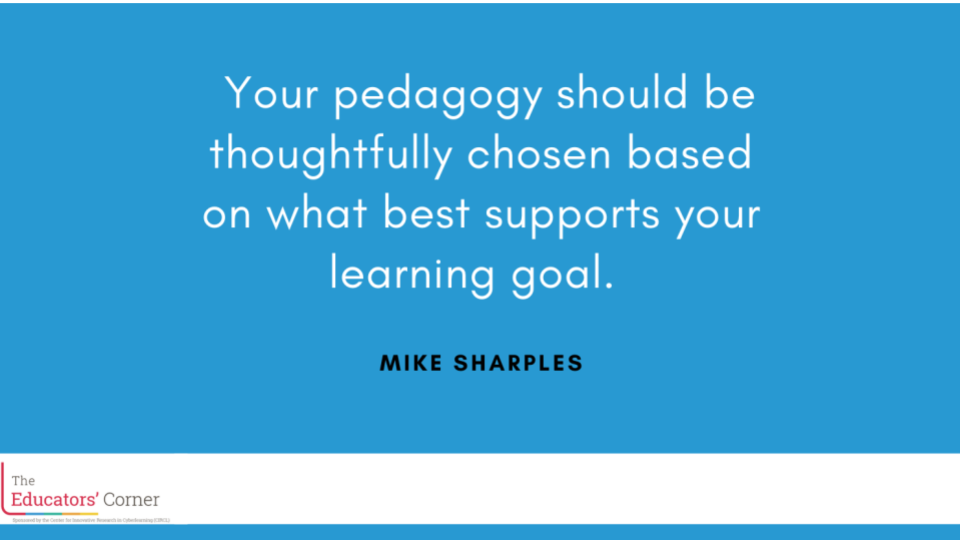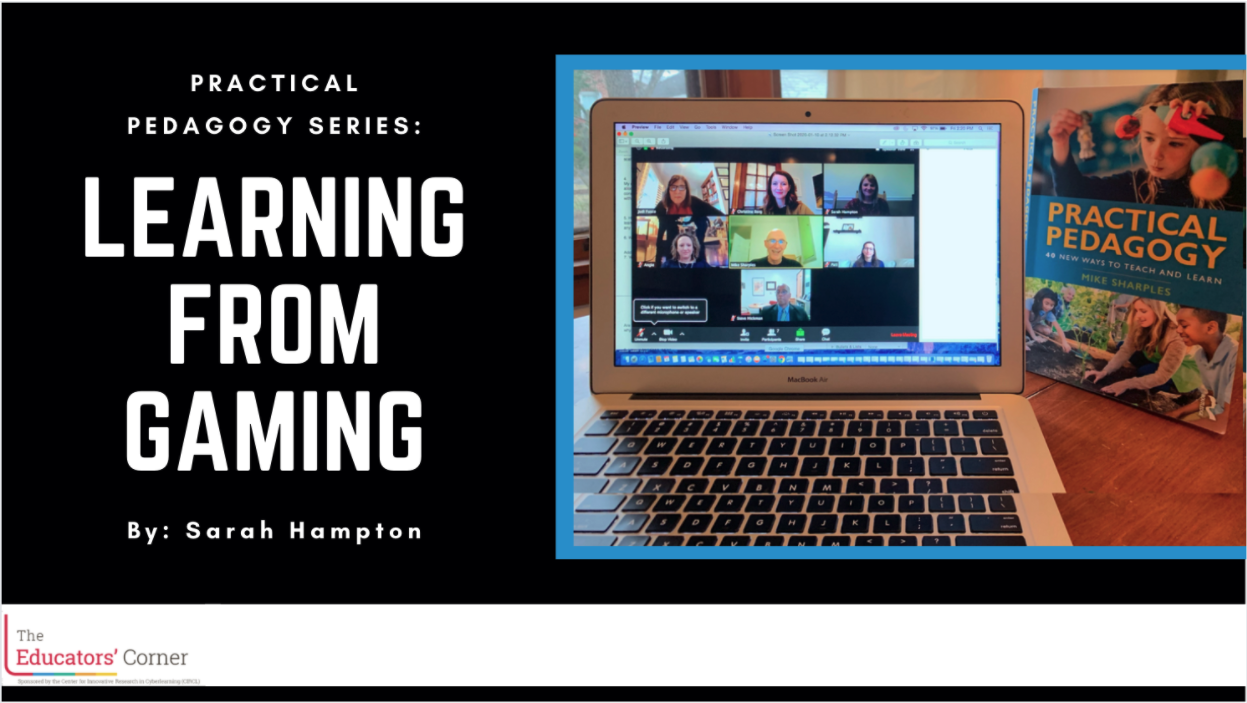by Sarah Hampton
In the previous post of this series, we explored why pedagogy really matters.
The more pedagogies we know → the more we can choose from → the more targeted we can make the approach to hit the learning goals → the better our students can learn
In this post, let’s see how pedagogy comes into play when incorporating educational games.
Consider two different game-based approaches I have used for a middle school physical science unit on chemical reactions. One year, I created a quiz show toward the end of the unit complete with teams and buzzers. The questions for the game came from the unit’s notes and textbook. Another year, I used a design competition in the middle of the unit in which students created the best reptile egg incubator by chemically engineering a heat pack with optimal amounts of calcium chloride, baking soda, and water. Which do you think was more effective?
That was actually a trick question. The answer should have been–more effective for what? If my learning goal was to promote low level recall of multiple concepts, then my quiz show was the better choice. If my learning goal was to promote collaboration, problem solving, and deep learning of fewer concepts, then the design competition was the hands down winner.
 Your pedagogy should be thoughtfully chosen based on what best supports your learning goal. That was my number one takeaway from our book study on Practical Pedagogy 40 New Ways to Teach and Learn. This applies to game-based learning like any other kind of learning. I like how author Mike Sharples explained it in our conversation with him last January.
Your pedagogy should be thoughtfully chosen based on what best supports your learning goal. That was my number one takeaway from our book study on Practical Pedagogy 40 New Ways to Teach and Learn. This applies to game-based learning like any other kind of learning. I like how author Mike Sharples explained it in our conversation with him last January.
The idea that pedagogy underpins effective games is also discussed in Motivating Children to Learn Effectively: Exploring the Value of Intrinsic Integration in Educational Games. The paper describes two different kinds of games. One type of game tacks fun onto learning like “chocolate covered broccoli.” (My quiz show is an example of this kind of gamification.) In contrast, intrinsically integrated games (like the incubator design competition):
- deliver learning material through the parts of the game that are the most fun to play, riding on the back of the flow experience produced by the game, and not interrupting or diminishing its impact and;
- embody the learning material within the structure of the gaming world and the player’s interactions with it, providing an external representation of the learning content that is explored through the core mechanics of the gameplay.
My students love learning through gaming. I bet yours do, too! Just remember–simply incorporating a game doesn’t mean your students will reach the learning goal. That depends on the underlying pedagogy. Evaluate potential games to see if the fun elements are sugar coating to make your learning goals more palatable or if the learning goals are intrinsically linked to the fun of the game.
You can find examples of games we like below. Do you already use effective games in your classes? Share them with us @EducatorCIRCLS!

Intrinsically Integrated Educational Games
Crystal Island (middle school microbiology)
Geniverse (middle school/high school genetics)
Graspable Math (several different algebraic ideas)
eRebuild (middle school ratios and proportions)
Euclid the Game (geometry constructions)
Human Resource Machine (computational thinking)
Zoombinis (computational thinking)
Game Builder Garage (computational thinking Switch game)
Robot Turtles (computational thinking board game)
Lemonade Stand (entrepreneurship)
Institute of Play (multiple subjects and grade levels)
Absolute Blast (multiplayer math board game for grades 6-8)
Socratic Smackdown (discussion-based humanities game to practice argumentation)
Self on the Stand (middle school ELA)
Conditionals with Cards (elementary computer science)
Educator CIRCLS posts are licensed under a Creative Commons Attribution 4.0 International License. If you use content from this site, please cite the post and consider adding: “Used under a Creative Commons Attribution 4.0 International License (http://creativecommons.org/licenses/by/4.0/).”
Suggested citation format: [Authors] ([Year]). [Title]. Educator CIRCLS Blog. Retrieved from [URL]

